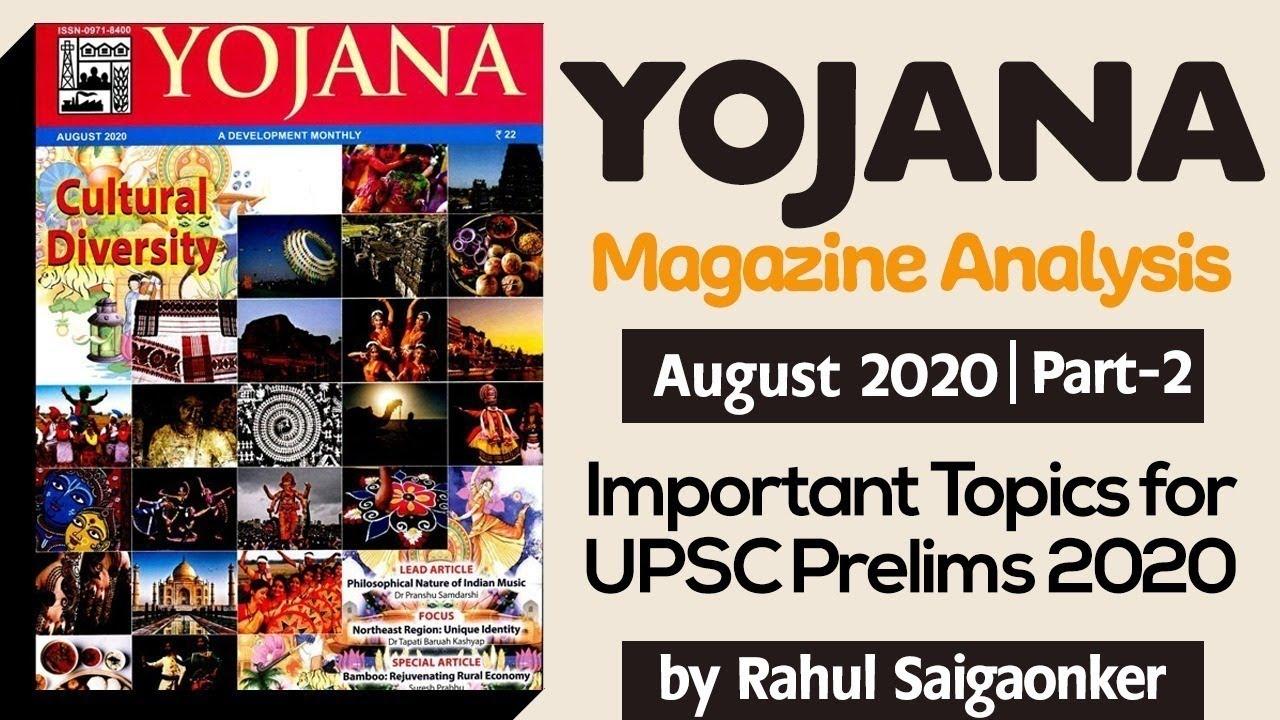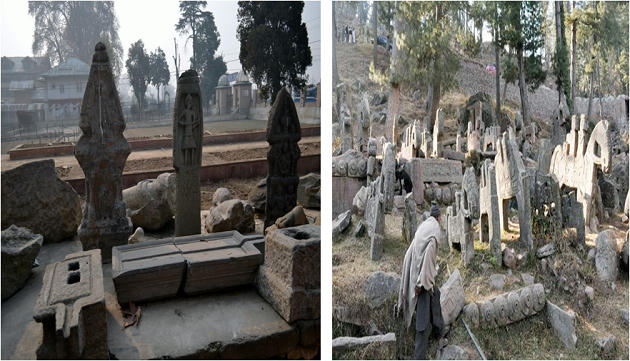Table of Contents
Content – Part II
- Maharashtra – Diverse & Vibrant
- Gujarat – Culture – A unifying Force
- Tamil Nadu – Temple Inscriptions
- Jammu & Kashmir – Memorial Stones

Maharashtra
Visual Art
- Ancient Petroglyphs
- Cave art
- Warli Painting
- Pinguli Chitrakathi
- Ganjifa
- Bhitti Chitra
Performing arts
Petroglyphs (Rock Carvings)
- Recently, in Ratnagiri district in Maharasthra archaelogists have discovered 1,000 rock carvings which are estimated to be 1200 years old.
- The carvings have a huge range of images from human and animal forms to abstract pattern and fertility symbols.
Cave Arts
- The Elephanta caves, the Ajanta and the Ellora caves are enlisted in the UNESCO World Heritage Site list
Cave art
Cave art
Cave Arts
- The Buddhist monuments: Caves 1–12
- The Hindu monuments: Caves 13–29
- The Kailasa temple: Cave 16
- The Dashavatara: Cave 15
- The Jain monuments: Caves 30–34
- Chotta Kailasha: Cave 30
- Indra Sabha: Cave 32
- Jagannatha Sabha: Cave 33

Cave Arts
Other caves
- The Kanheri caves, around the outskirts of Mumbai are considered to be very important to understand the development of Buddhism in Western India.
- The Bhaja, Karla, Bedse, Pandavleni, Lenyadri, Manmodi and Shivneri caves are wellknown for their architecture, sculpture and paintings.
Learning through Pictures

Warli Paintings
- The Warli art is a painting style of the tribals who predominantly inhabit Dahanu, Talaseri, Jawhar, Palghar
- The art uses very basic representation-a circle, a triangle and a square-to depict nature and daily activities of the tribals.
- The central motif in these ritual paintings is surrounded by scenes portraying hunting, fishing and farming, festivals and dances, trees and animals.
- Only white colour is used in Warli paintings. The white pigment is a mixture of rice paste and water with gum as a binder.

Pinguli Chitrakathi
- The Thakkar tribe has been practicing Pinguli Chitrakathi since the 17th
- This is done using a paper, brush and handmade
- It follows a sequence and is based on the stories of the Mahabharata and Ramayana.
- A collection of pictures is used to tell the story, which unfolds in the form of songs supported by the music.

Ganjifa
- Ganjifa are handmade playing cards made by the Chitari community.
- These cards are made from circular pieces of paper on which intricate designs of Dashavatara (Ten incarnations of Lord Vishnu) are hand-painted. A set of Dashavatara Ganjifa consists of 120 cards.
- Under the patronage of the Royal family of Sawantwadi, the Chitari community has preserved this dying art.

Bhitti Chitra
- Bhitti Chitra is an art style that depicts religious themes on the walls of houses or temples.
- The Matheran or Mahatma communities are traditional Bhitti Chitra
- The paintings are embossed with gold and silver to enhance the depictions.
- The Matherans live in Godvard near Pali and are known for their paintings of the Gangaur idols.

Performing arts
Nandiwala
- The nandiwala is a specialist performer who presents animal shows.
- Combining tricks with some soothsaying he employs gubgubee (a double-sided membranophone), ghadyal-tipru (a mallet used to strike a metal disc) and tiny bells as instruments.
- Rhythmic playing, controlled verbalisation, loud thumping and scraping constitute the musical input.
- After the show, the performer asks for alms.

Performing arts
Bahuroopi
- The term literally means one with many disguises as the performer parades in different disguises impersonating pregnant women, young mothers, etc.
- He is a devotee of cult deities like Bahiroba, Khandoba, Jakhai and Janai, and his songs, full of verse and rhymes, are a humorous invitation to marriage.
Dhangari Ovya
- This movement-oriented song is associated with goatherds (dhangars) and centred on Biruba, an incarnation of Lord Shiva.
- The dhangars, colourfully clad, dance around players of a huge dhol executing vigorous movements. Broad forceful rhythms, emphatic stanza endings and powerful voice projections are a part of this performance, which is usually held outdoors.
Performing arts
Vasudev Geet
- Vasudev, the performer, is an incarnation of Lord Krishna. Ghungaroo (ankle bells) and a hand-held pair of manjiri (cymbals) accompany the flute or the singing.
- Vasudev sings himself and executes nimble, delicate dance steps and whirling body movements.

Performing arts
Waghya-Murali Geet
- The songs form a sub-variety of gondhal, a known form of ritual theatre.
- Waghya and murali are respectively the male and female devotees of Khandoba.
- The murali is the chief dancer and the waghya is the accompanist, participating in the performance known as Jagran (keeping awake).
- Tuntune (one string rhythm-cum-drone chordophone), ghungaroos and ghol (a small bell) are the only instruments used.

Folk Dance
Ritualistic Dance Form
- Khandoba Jagran
- Ritualistic dance forms can be seen in the Khandoba Jagran of the waghya-murali.
- The participants through the dance express their devotion to God Khandoba and Goddess Renukadevi.
Gondhal
- In Gondhal, the gondhali (male performer) dances uninhibitedly to the beats of the sambal and at the same time sings gondhal songs which are devotional in nature.
Folk Dance
Devotional Dance Form
- Bharud and Kirtan are spontaneous devotional dance In bharud, the bharudkar (performer) sings the opening line, then preaches delivering a spiritual message, and between and after indulges in dancing.
- Warkari kirtan or dindi dance is performed during the Pandharpur pilgrimage. The dance is not choreographed but is extempore with an overflow of devotional expressions of the warkari (pilgrims), ardent devotees of Lord Vitthal.
- Bohada which is also known as Panchami, Akhadi, Chaitee constitutes a dance drama associated with mythological stories. The stories of Ramayana, Mahabharata, Lalit and Dashawatara all form part of the repertoire.
Folk Dance
Social Awareness Dance Form
- Powadas (ballads) have been popular ever since the time of Chhatrapati Shivaji Maharaj.
- Powada has an in-built veer ras (valiant spirit) in it and successfully narrates the tales of Chhatrapati Shivaji Maharaj and other brave warriors.
- It is well-known for the propagation of social doctrines and pronouncing social messages at various levels.

Folk Dance
Entertaining Dance Form
- Lavani is an aesthetical combination of singing, enactment and dance, and is one of the most popular folk-dance forms of Maharashtra.
- Tamasha is rich in sringar ras (romanticism). There are two types of tamasha, dholkit fadacha tamasha and sangeet baricha tamahsa.
- Lavani is performed in both these forms.
Folk Dance
Assorted Folk Dance Form
- Naman, Khele and Balya (Jakhadi) dance are prominent folk forms.
- Naman and Khele are purely dramatic forms which are performed during the Holi season whereas Jakhadi is performed during Ganesh Festival.
- Chapai dance of Sindhudurg district is dance of shepherd community. It resembles the gaja dance of western Maharashtra. These dances are performed to honour the home-deities of the shepherds Biroba and Jotiba.
Folk Dance
Assorted Folk Dance Form
- Koli dance is the dance of the fishing community (Kolis). It is performed on festive days and at marriages.
- Men and women dance together.
About Gujarati Language

Learning through Pictures
Learning through Pictures

Tamil Nadu inscriptions
- Tamil Nadu temples have the maximum number of inscriptions.
- Most inscriptions deal with local administration of land and water. They are about disputes or allocation or They give us a lot of information on how land was cultivated, how water was conserved and used.
- Temple walls also record the resolution of caste disputes.
- Ex: Bramhadesam in the Tambraparni banks is a magnificent temple. It has on its walls a short arbitration judgement that enjoined two castes to live peacefully for the well-being of the entire village.
Tirunelveli inscription
- A small inscription from 898 AD in the Shiva temple in Manur, Tirunelveli is of vital importance.
- It mentions the village land owners meeting on a night and redrafting the rules of election into the Judicial cum legislative assembly of the village.
Inscriptions of Uthiramerur
- The more famous Uthiramerur inscription states the name of the village is “Uttaramerur Chaturvedi Mangalam“.
- Around 25 inscriptions, spanning reigns of around four Pallava kings, have been found at Uthiramerur. In the later part of the 9th century, the Cholas captured the region who further added many inscriptions here.
- The temple inscriptions of Uthiramerur are notable for their historical descriptions of the rural self-governance. They indicate that Uthiramerur had two village assemblies: Sabha and Ur
- The Sabha an exclusively Brahmin (priestly class) assembly, while the Ur was made up of people belonging to all the classes.
Inscriptions of Uthiramerur
Learning through pictures
Download Free PDF – Yojana Magazine











































 WhatsApp
WhatsApp